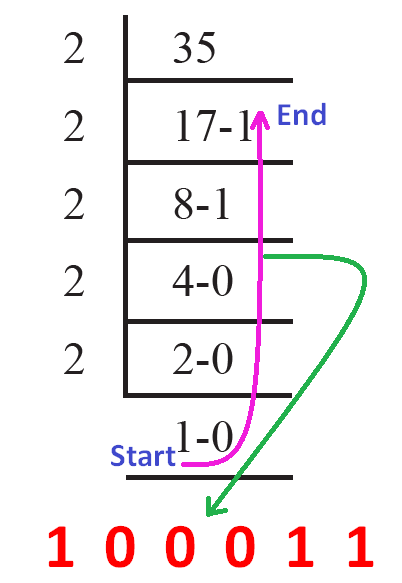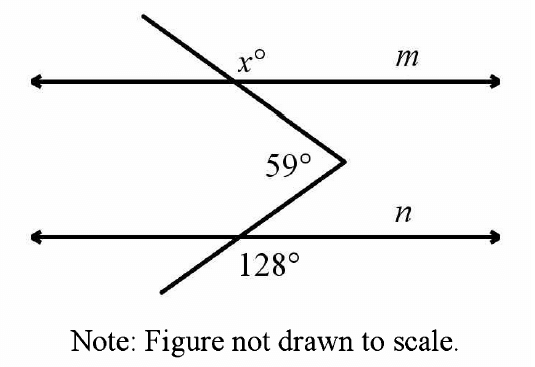DECIMAL TO BINARY CONVERSION
The decimal number system that we used everyday contains ten digits, 0 through 9 and the base of this system is 10.
There is another very important number system known as Binary Number System which contains only two digits, 0 and 1. So the base of binary number system is 2.
To avoid confusion while using different numeral systems, the base of each individual number may be specified by writing it as subscript of the number.
For example, the decimal number 156 will be written as 15610. The binary number 10011100 will be specified as 100111002.
In the binary system, only 2 digits are used, namely 0 and 1. The positional values in a base 2 system are ….,
24, 23, 22, 21, 20
Note : There is no 2 in base 2.
For (1, 10, 11, 100, 101, 110, 111, 1000, 1001, 1010, 1011, 1111, …..)
For example, the number 10011 (base 2) means :
= 1 x 24 + 0 x 23 + 0 x 22 + 1 x 21 + 1 x 20
= 16 + 0 + 0 + 2 + 1
= 19 (base 10)
Converting Decimal to Binary - Example
A decimal number 35 (base 10) can be converted to binary number (base 2) using the method explained below.
Since the binary number has the base 2, we go on dividing by 2 and get the remainder.

Therefore, the decimal number 35 (base 10) is equal to the binary number 100011 (base 2).
Do you want to check your answer fro the questions like "Decimal to binary" or "Binary to decimal" ?
Please click on the following links to get answer instantly for your questions.
Binary to decimal online converter
Decimal to binary online converter
Kindly mail your feedback to v4formath@gmail.com
We always appreciate your feedback.
©All rights reserved. onlinemath4all.com
Recent Articles
-
Quadratic Equation Problems with Solutions
Apr 12, 25 08:21 PM
Quadratic Equation Problems with Solutions -
Digital SAT Math Problems and Solutions (Part - 142)
Apr 11, 25 06:26 PM
Digital SAT Math Problems and Solutions (Part - 142) -
Digital SAT Math Problems and Solutions (Part - 141)
Apr 11, 25 10:38 AM
Digital SAT Math Problems and Solutions (Part - 141)

